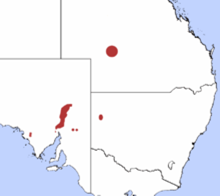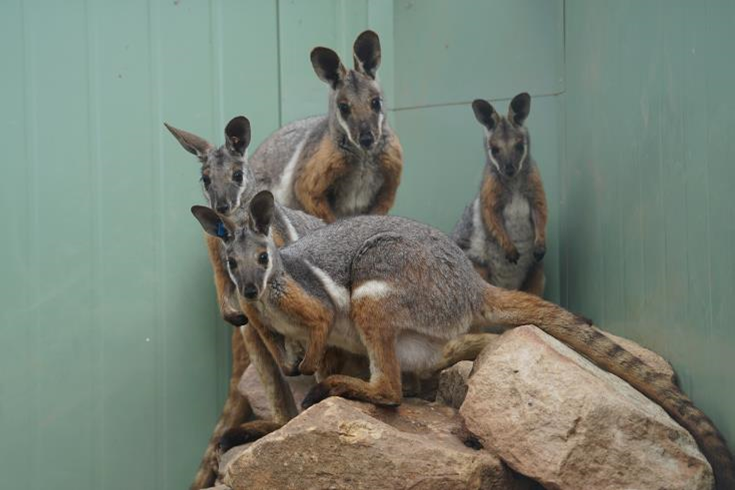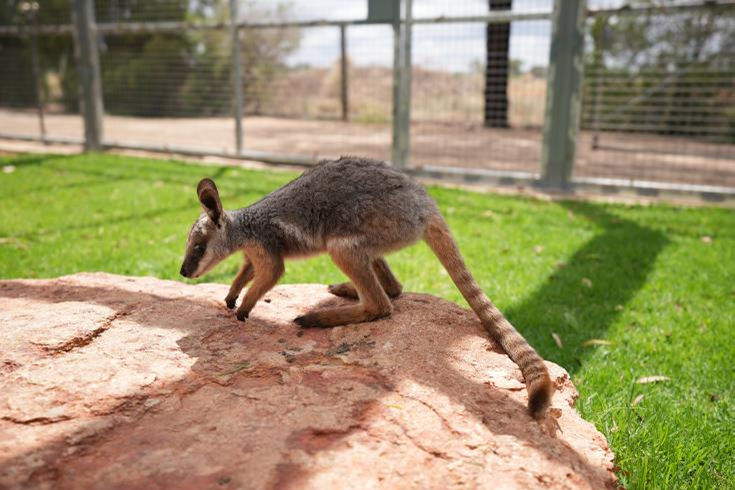Yellow-footed Rock-wallaby (Petrogale xanthopus)
Habitat:
Yellow-footed Rock Wallabies live in semi-arid areas in rocky outcrops and ranges. Once common in arid mountain areas, today the species is only found in seven small pockets of land in Queensland, New South Wales and South Australia.
Description:
An adult male can be 80cm tall and weigh up to 11kg whilst an adult female can stand up to 60cm tall and weigh 6-7kg. The coat markings are spectacularly complex being an overall fawn-grey with a white side stripe and cheek stripe, brown and white hip stripe and orange-yellow ears, forearms, hind legs and feet while the tail is orange-brown with darker bars or rings. There can be a regional variation in the richness of these colours. Fur is short and neat.
Status:
Near Threatened
Interesting facts:
- The Yellow-footed Rock Wallaby is also known as the Ring-tailed Wallaby.
- They are the largest of all the Rock Wallabies.
- Rock Wallabies use their tails for hopping and balancing on rocks and uneven substrate.
- To survive on the rocky areas that they live in, they have to have strong back legs and a long tail to balance with on the steep slopes.
- Diet: grass, vegetables, bark, twigs, fruits and hay. During times of drought they will browse on trees and shrubs.
- Gestation: 30-32 days and usually produce 1 off-spring.
- Reproduction: Rock Wallabies can breed any time of the year when conditions are good (plenty of food and rainfall). After 6-7 months the joey will leave the pouch. They are the only mammals that transfer water from their mouths to their joey.
- The Yellow-footed Rock Wallaby is able to put their gestation on hold during a drought to give their joey the best chance to survive.
- Predators: Foxes, Dingoes and Wedge-tailed Eagles.
- Lifespan: 12-18 years.

Yellow-footed Rock-wallaby distribution map







